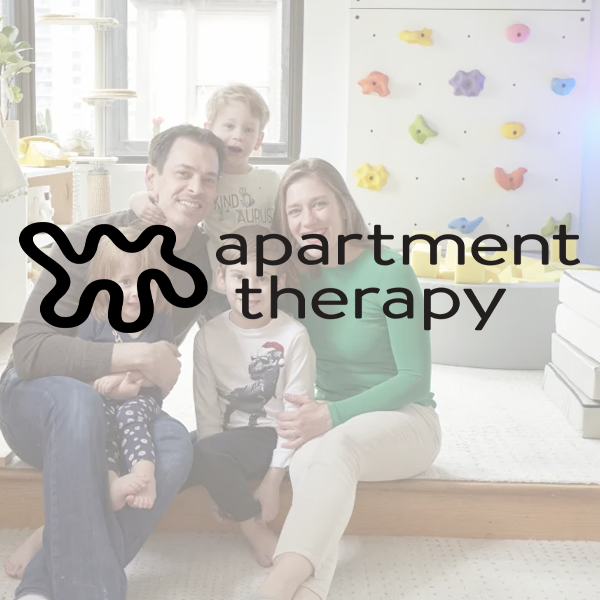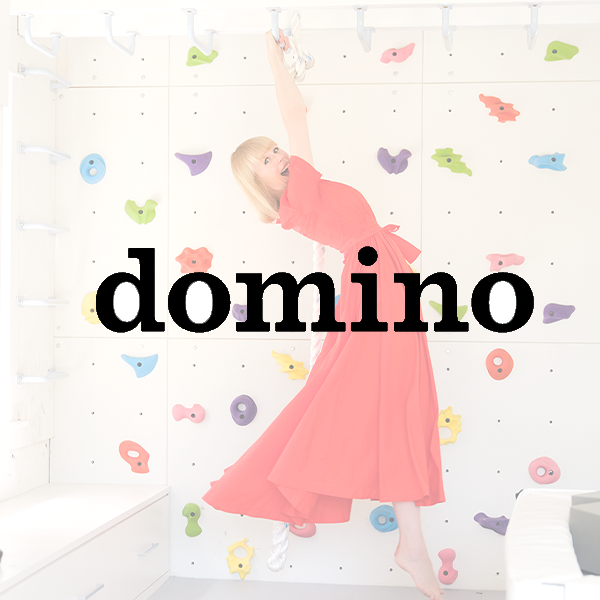My family of 5 lives in a one-bedroom apartment. The kids have a climbing wall and a foam pit, but my husband and I don't share a bed.
When my boyfriend and I moved in together, we found a nice 650-square-foot one-bedroom apartment in New York City. It was perfect for just the two of us, so we rented it.
We lived together for almost a decade before getting married, and two years after that, we started trying to have kids.
Before my first son was born, I had two miscarriages, including one that could have led to cancer if it wasn't cleared. Not wanting to jinx anything, I didn't want to move to a bigger space while I was pregnant. And when our first son was born, we realized we could stay in our one-bedroom abode to save money, avoid the hassle of moving, and continue living in the neighborhood we preferred.
We now have three children and still live in that same apartment 15 years later. While it's small, the apartment is right for us after I made a few design changes.
Without our first kid, the apartment was a great fit, but then suddenly it wasn't
The first year was easy. Our son's crib was in our room, which was convenient because I was nursing. We also carved out a spot in our living room for his toys.
Things got a lot harder in the second year. Our easy-to-contain baby was growing into a free-roaming, curious tornado. His toys were everywhere, which was ironic because he seemed more interested in hiding the remote control and pulling out our kitchen drawers than in his toys. Plus, he was a sensitive sleeper, which made opening and closing the bedroom door feel like we were handling dynamite.
I was on edge and felt like I had no room to breathe. I started to resent my husband for taking up space and my son for having so much energy. I started to wonder: Why did we make this dumb decision to stay in a small space and let ourselves burn out?
Since our lease wasn't up, and we couldn't move to a bigger space, I started rearranging the furniture
In a desperate attempt to create a room for our son, I turned to the alcove in our living room. We had a carpenter install accordion doors so the space could be closed off at night. I moved his play area next to the alcove so that the kid spaces were close together.
I then moved the living-room furniture — couch, coffee table, and TV — to the opposite end of the room and used our dining table to divide the kid and adult spaces.
Carving up our big living room into zones with specific functions was life-changing. Suddenly, the madness of raising a toddler in a one-bedroom didn't seem so unmanageable anymore. I felt calmer, more present, and empowered.
But then we got pregnant again
When I got pregnant a few years later, I didn't feel the sudden urge to move. But then things got harder than I ever could have imagined. I was having twins, and seven months into the pregnancy, the pandemic hit. Then my older son's school went remote.
We couldn't move to accommodate our growing family or to escape the pandemic because we were paralyzed by the day-to-day struggle.
Designing the apartment to work for our family became my coping mechanism
I did a ton of research on early childhood development, and it helped guide our toy setup in the apartment. For example, we invested in more open-ended toys like blocks and set up a rotation system. We also now have a great gross-motor area with a small rock-climbing wall and foam pit. The alcove now has a dress-up area, too.
Now that things have settled back into a more normal routine, we've given the kids the bedroom. They have a bunk bed that resembles a tree house; my twins sleep on the bottom two beds, while my oldest sleeps on top.
My husband and I, meanwhile, are in the foyer at night. I sleep on a Murphy bed, while my husband is on an air mattress. We finally have more space and privacy since the rest of the apartment is ours after the kids go to bed.
Since we don't own our apartment, I'm not against moving if it's what's best for our family. When my kids get older, I'd like my daughter to have her own room. But I do believe there's still so much I can do to optimize this space. It's all about trade-offs, prioritizing values, and thinking outside the box.



